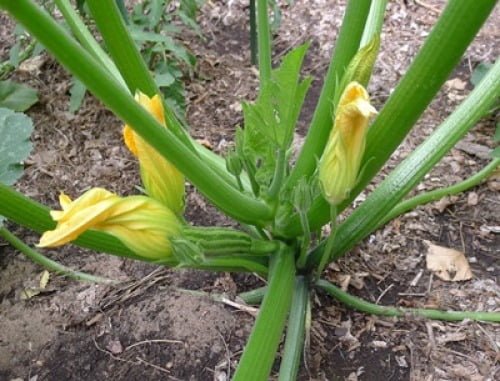You’ve just harvested your zucchini squash, but there’s one problem – they’re not growing as big as they should be, and the flowers are falling off! Don’t worry, because in this article “How to Pollinate Zucchini Squash”, you’ll find out the simple yet effective technique on how to pollinate your zucchini squash and ensure a bountiful harvest. Whether you’re a gardening enthusiast or a beginner, this step-by-step guide will show you how to boost the pollination process and reap the rewards of healthy and thriving zucchini plants. So grab your gardening gloves and let’s get started on turning those wilting flowers into plump and delicious zucchinis!
Why is pollination important for zucchini squash?
The role of pollination in fruit development
Pollination plays a crucial role in the development of zucchini squash fruits. In simple terms, pollination is the transfer of pollen from the male flower to the stigma of the female flower. This transfer is essential because it enables fertilization, which leads to the formation of seeds and the development of the fruit. Without pollination, zucchini squash plants would not produce the delicious, nutrient-rich fruits that we enjoy.
The benefits of thorough pollination
Thorough pollination is beneficial for both the quantity and quality of zucchini squash fruits. When a flower receives an ample amount of pollen, each ovule has a higher chance of being fertilized. As a result, more seeds are produced, leading to plumper and more robust fruit. Thorough pollination also promotes uniform fruit shape, size, and color, making the harvest even more visually appealing. With proper pollination, you can expect a higher yield of zucchini squash and enjoy tastier and more nutritious fruits.
Common pollination challenges for zucchini squash
While pollination is essential, zucchini squash plants face several challenges when it comes to successful pollination. One common challenge is the limited availability of pollinators. Zucchini squash relies heavily on bees for efficient pollination, but factors such as habitat loss, pesticide use, and climate change have significantly impacted bee populations. Additionally, zucchini squash flowers have a relatively short window of receptivity, and if pollen transfer does not occur during this time, fruit set may be poor. Understanding these challenges is crucial in implementing effective pollination strategies for your zucchini squash plants.
Understanding the zucchini squash flowering process
Identifying male and female flowers
To successfully pollinate zucchini squash, it is important to distinguish between male and female flowers. Male flowers typically appear first and are characterized by their long, slender stems and a prominent stamen with pollen-producing anthers. Female flowers, on the other hand, can be identified by the presence of a small fruit behind the petals, known as the ovary. The stigma, located at the center of the female flower, is where the pollen must be transferred for successful fertilization. Understanding the distinction between male and female flowers is the first step in effective pollination.
The timing of zucchini squash flowering
Timing is crucial when it comes to pollinating zucchini squash. Male flowers usually appear a week or two before female flowers, so it’s important to be patient and wait for the female flowers to bloom. Once both male and female flowers are present on the plant, the window for successful pollination is limited. Female flowers are only receptive to pollination for about 24 hours, so it’s important to closely monitor their development and be ready to take action when the time is right.
The importance of recognizing flower maturity
Flower maturity is another important factor in achieving successful pollination. When male flowers first open, their pollen may not be fully mature. It is vital to wait until the anthers are covered with yellow pollen before attempting to collect or transfer pollen. Similarly, female flowers must be mature and open, with a sticky stigma, to accept pollen effectively. By recognizing flower maturity and waiting for the optimal time, you can increase the chances of successful pollination and fruit set.
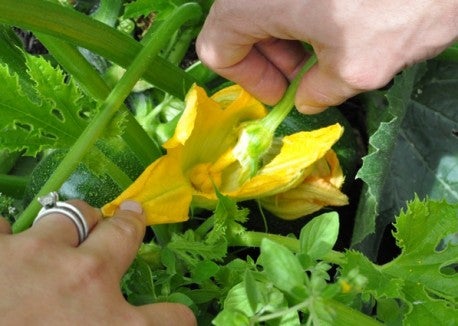
Methods of pollinating zucchini squash
Natural methods of pollination
One of the most effective and environmentally friendly methods of pollinating zucchini squash is through natural means. Bees, particularly honeybees and native bees, are excellent pollinators for zucchini squash. These buzzing insects are attracted to the bright yellow color of the male flowers and collect pollen as they move from flower to flower. By providing a bee-friendly environment with a variety of blooming flowers and minimizing pesticide use, you can encourage natural pollination in your zucchini squash patch.
Hand pollination techniques
Hand pollination is another method that can be employed if natural pollination is insufficient or impractical. This technique involves manually transferring pollen from the stamen of the male flower to the stigma of the female flower. Hand pollination can be particularly useful in situations where pollinator populations are low or when specific zucchini squash varieties require controlled pollination. With a gentle touch and the right tools, you can ensure effective pollination and increase fruit set.
Choosing the right pollination method for your needs
Selecting the appropriate pollination method depends on various factors such as pollinator availability, the size of your zucchini squash patch, and the time and effort you are willing to invest. If you have a large garden with an abundance of pollinators, relying on natural pollination may be sufficient. However, if pollinators are scarce or if you have a small number of plants, hand pollination may be a practical approach. In some cases, a combination of natural and hand pollination techniques may yield the best results. Assessing your specific needs and resources will help you choose the most suitable method.
Natural methods of pollination
The role of bees as pollinators
Bees, particularly honeybees and native bees, are highly effective and efficient pollinators for zucchini squash. As they visit male flowers in search of nectar, their bodies inadvertently collect pollen. When they move to female flowers, this pollen is transferred to the stigma, facilitating fertilization. Bees play a crucial role in not only pollinating zucchini squash but also various other crops, making them essential contributors to our food production.
Attracting bees to your garden
To attract bees to your zucchini squash garden, it’s important to provide them with an inviting habitat. Planting a diverse array of flowering plants that bloom throughout the growing season will provide bees with a consistent food source. Choose plants that have open flowers with easily accessible pollen and nectar. Native wildflowers, herbs like lavender and rosemary, and fruit trees are excellent choices. Avoid using pesticides, as they can harm bees and other beneficial insects. By creating a bee-friendly environment, you can enhance the natural pollination of your zucchini squash plants.
Encouraging other beneficial insects
While bees are the primary pollinators for zucchini squash, other beneficial insects can also contribute to pollination. Butterflies, moths, and certain species of flies can inadvertently transfer pollen as they visit flowers. To attract these beneficial insects, consider planting a mix of flowers with different colors, shapes, and scents. Additionally, creating water sources such as shallow dishes filled with clean water or birdbaths can provide hydration for visiting insects. By fostering a diverse and welcoming garden, you can encourage a wide range of beneficial insects to aid in pollination.
Utilizing wind as a natural pollination method
Although bees are the main pollinators for zucchini squash, wind can also play a role in pollination, especially in areas where insect pollinators are scarce. Zucchini squash flowers have a soft and starchy pollen that can easily be carried by the wind from the male to the female flowers. To utilize wind as a natural pollination method, it is important to provide space for airflow between plants and avoid dense planting arrangements. By facilitating airflow, you can increase the chances of successful wind pollination.
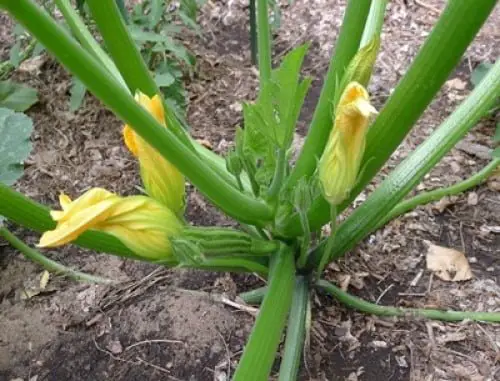
Hand pollination techniques
Identifying male and female flowers for hand pollination
Hand pollination requires the identification of male and female flowers on your zucchini squash plants. Male flowers are typically the first to appear and can be recognized by their long, thin stems and prominent stamens covered in yellow pollen. Female flowers, which appear later, have a swollen base that will eventually develop into the fruit. Once you can differentiate between the two, you can proceed with hand pollination to aid in the fertilization process.
Tools needed for hand pollination
To successfully hand-pollinate zucchini squash, you will need a few simple tools. A small, clean paintbrush or cotton swab can serve as a pollen brush. These tools allow you to gently collect pollen from the male flower and transfer it to the stigma of the female flower. It is crucial to ensure that the tools are clean and free from any contaminants to prevent the spread of diseases or unwanted substances to the flowers.
Step-by-step guide to hand pollination
- Identify male and female flowers on your zucchini squash plants.
- Wait until both male and female flowers are fully open and mature.
- When the male flower is ready, gently collect pollen by brushing the anthers with your chosen tool.
- Carefully transfer the collected pollen onto the stigma of the female flower, ensuring that it comes into direct contact with the sticky surface.
- Repeat the process with multiple male flowers to increase the chances of successful pollination.
- Monitor the female flowers closely to ensure they are properly pollinated and observe the development of fruits.
- If more female flowers appear later, continue hand pollination as needed to ensure optimal fruit set.
Choosing the right pollination method for your needs
Considering pollinator availability in your area
The availability of pollinators in your area can significantly influence your choice of pollination method. If you live in an urban or highly developed area with little green space, natural pollinators such as bees may be scarce. In such cases, implementing hand pollination techniques can increase the chances of successful fruit set. Conducting research or consulting local gardening experts can provide valuable information regarding the presence of pollinators in your specific region.
Assessing the size of your zucchini squash patch
The size of your zucchini squash patch is another crucial factor to consider when deciding on a pollination method. If you have a small garden or only a few zucchini plants, hand pollination is a viable option. It allows you to have greater control over the pollination process, ensuring the optimal transfer of pollen. In larger gardens or commercial-scale operations, natural pollination through bees and other insects may be more efficient due to the increased area covered and the ability of insects to pollinate multiple plants simultaneously.
Evaluating time and effort required for hand pollination
Hand pollination requires more time and effort compared to natural pollination since it involves manually transferring pollen from flower to flower. If you have the capacity to dedicate time to this process, hand pollination can be a rewarding and effective method. However, if you have limited time or are unable to regularly monitor your zucchini squash plants, relying on natural pollination may be a more practical choice. Consider your schedule and gardening capabilities when deciding on the preferred pollination method.
Combining natural and hand pollination methods
It is important to remember that pollination methods are not mutually exclusive. In fact, a combination of natural and hand pollination techniques can optimize fruit set and yield. By providing an environment that attracts bees and other beneficial insects, you increase the chances of natural pollination. Simultaneously, performing selective hand pollination on specific plants or varieties can enhance fruit production and control the pollination process. Experimenting with different approaches and adapting them to suit your specific needs and resources can lead to the best possible results.
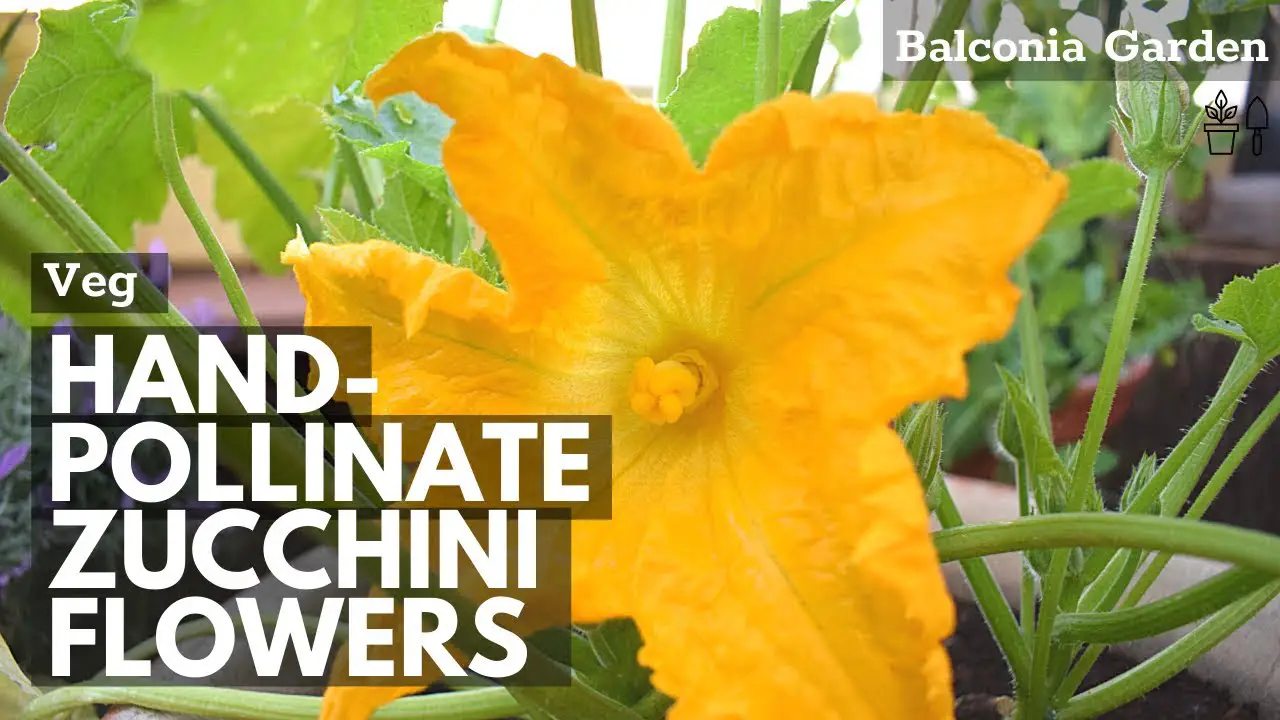
Best practices for successful zucchini squash pollination
Maintaining a healthy zucchini squash plant
A healthy zucchini squash plant is more likely to produce abundant and well-pollinated fruits. To ensure optimal plant health, provide the plants with appropriate sunlight, water, and nutrients. Zucchini squash plants thrive in full sun, so make sure they receive at least 6-8 hours of direct sunlight daily. Adequate and consistent watering, ensuring the soil remains moist but not waterlogged, is crucial for healthy plant growth. Additionally, regular fertilization with a balanced organic fertilizer can provide the necessary nutrients for robust vegetative and reproductive growth.
Providing adequate water and nutrients
Water availability and nutrient uptake play a vital role in the pollination process. Keep the soil around your zucchini squash plants consistently moist, especially during flowering and fruit development stages. Water stress can negatively affect flower production and fruit set. As mentioned earlier, supplementing the soil with organic fertilizers will help ensure an adequate supply of nutrients, which are necessary for healthy flower and fruit development. A well-fed and properly hydrated zucchini squash plant is better equipped to support successful pollination and fruit production.
Protecting flowers from extreme weather conditions
Extreme weather conditions, such as high temperatures or heavy rainfall, can negatively impact the pollination process. High temperatures can cause flower drop and result in poor fruit set. To protect your zucchini squash flowers from extended periods of heat, provide shade or construct temporary structures like shade cloth. Conversely, heavy rainfall can wash away pollen, making it difficult for successful pollination. Consider using umbrellas or protective covers during rainstorms to shield the plants while still allowing airflow. By mitigating the impact of extreme weather conditions, you can enhance the chances of successful pollination.
Maintaining a diverse and bee-friendly garden
Creating a diverse and bee-friendly garden environment is key to supporting successful pollination of zucchini squash and other plants. Plant a variety of flowering plants that bloom throughout the growing season to provide a continuous food source for pollinators. Choose flowers with different shapes and colors to attract a range of beneficial insects. Adding native plants to your garden can be particularly beneficial, as they are adapted to the local ecosystem and are attractive to native bees and other insects. Minimizing pesticide use and providing water sources will further enhance the appeal of your garden to pollinators.
Common pollination issues and troubleshooting
Lack of pollinator activity
One common issue when it comes to zucchini squash pollination is a lack of pollinator activity. If you notice minimal bee or insect activity around your zucchini plants, it’s important to take action to attract and support pollinators. Enhance your garden’s appeal to bees by planting a variety of flowering plants and avoiding the use of pesticides. Consider providing nesting materials such as bee boxes or untreated wooden logs to encourage bee populations to take up residence in your garden. Creating a hospitable environment for pollinators will increase the chances of successful pollination.
Poor pollen transfer
Sometimes, even with pollinators present, poor pollen transfer can occur, leading to low fruit set or misshapen fruits. This may be due to inadequate pollen collection by the pollinators or insufficient contact between the pollen and the stigma. Hand pollination can be a valuable solution in such cases, as it allows for direct and controlled transfer of pollen. By gently brushing the collected pollen onto the stigma, you ensure effective pollen deposition, increasing the chances of successful fertilization and fruit development.
Identifying and resolving male flower overabundance
Zucchini squash plants often produce an abundance of male flowers compared to female flowers, which can result in poor pollination and fruit set. This overabundance is a natural occurrence, and as the season progresses, the plant usually finds its balance. However, if you are facing an imbalance in flower production, it may be helpful to remove some of the male flowers. This encourages the plant to allocate more energy towards female flower production, increasing the chances of successful pollination. Simply pinch off excess male flowers carefully, taking care not to damage the plant or its remaining flowers.
Preventing cross-pollination with other squash varieties
If you are growing multiple varieties of squash in close proximity, the risk of cross-pollination arises. Cross-pollination occurs when pollen from one variety is transferred to the female flowers of a different variety, leading to changes in fruit characteristics. To prevent cross-pollination, you can implement physical barriers such as hand-pollination bags or fine mesh netting to isolate the flowers of different varieties. Alternatively, you can stagger planting times to ensure that the flowering periods of each variety do not overlap. By taking precautions to prevent cross-pollination, you can preserve the integrity and purity of your zucchini squash fruits.
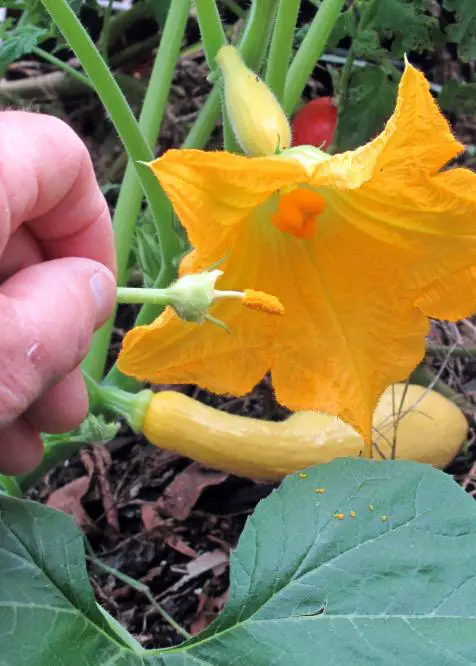
Harvesting and saving zucchini squash seeds
When to harvest zucchini squash
Knowing when to harvest zucchini squash is essential to ensure optimal flavor and texture. Harvesting too early can result in underdeveloped fruits, while leaving them on the plant for too long can lead to oversized and tough-skinned zucchinis. Generally, zucchini squash is ready for harvest when it reaches a length of 6-8 inches and has a glossy skin. The fruits should still feel firm and have a vibrant green color. Regular harvesting of mature zucchini squash promotes continuous fruit production throughout the growing season.
Extracting and cleaning zucchini squash seeds
To save zucchini squash seeds for future planting, you need to extract and clean them properly. Begin by allowing a mature zucchini squash to fully ripen on the vine. Once the fruit has reached its maximum size and turns yellow or orange, it is ready for seed extraction. Cut the squash open lengthwise and gently scoop out the seeds, along with any surrounding pulp, into a container. Submerge the seeds in water and let them sit for a day or two, stirring occasionally. This process helps separate the seeds from the pulp. Afterward, thoroughly rinse the seeds, removing any remaining debris or pulp.
Proper seed storage techniques
To maintain seed viability, it is important to store zucchini squash seeds properly. Once cleaned, allow the seeds to dry completely. Spread them out in a single layer on a paper towel or a mesh screen, preferably in a well-ventilated area. This helps prevent moisture buildup, which can lead to mold or deterioration. Once completely dry, transfer the seeds to airtight containers such as glass or plastic jars, ensuring they are labeled with the variety and date. Store the containers in a cool, dry, and dark place, such as a pantry or a refrigerator. Properly stored seeds can remain viable for several years, allowing you to continue growing your favorite zucchini squash varieties in the future.
Conclusion
The importance of pollination for zucchini squash cannot be overstated. Pollination is crucial for the development of fruits, ensuring their size, shape, and taste. Understanding the zucchini squash flowering process, identifying male and female flowers, and recognizing flower maturity are vital steps in successful pollination. By implementing natural methods such as attracting bees and other beneficial insects or utilizing wind as a natural pollination method, you can significantly enhance pollination rates. Hand pollination techniques can also be employed to increase fruit set and control the pollination process, especially when natural pollinators are limited.
Choosing the right pollination method depends on factors such as pollinator availability, garden size, and time commitment. By maintaining healthy plants, providing adequate water and nutrients, protecting flowers from extreme weather, and promoting a diverse and bee-friendly garden, you create an optimal environment for successful pollination. Troubleshooting common pollination issues, harvesting and saving zucchini squash seeds, and understanding the benefits of pollination complete the comprehensive guide to effectively pollinating zucchini squash. With these tips and techniques, you can ensure a bountiful harvest of delicious zucchini squash fruits and enjoy the fruits of your labor in various culinary delights.
